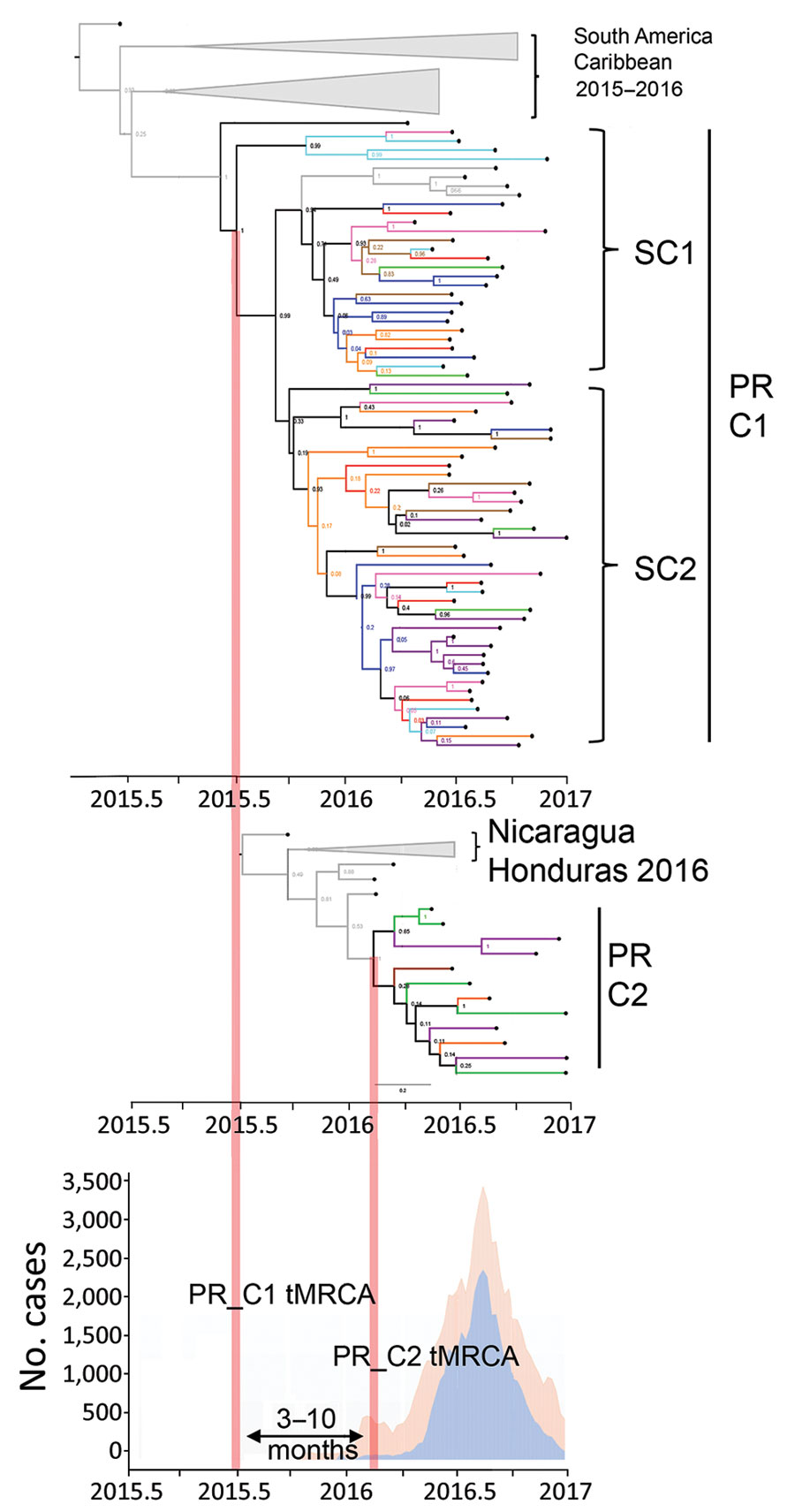Tracing the Origin, Spread, and Molecular Evolution of Zika Virus in Puerto Rico, 2016–2017
Gilberto A. Santiago
1, Chaney C. Kalinich
1, Fabiola Cruz-López, Glenda L. González, Betzabel Flores, Aaron Hentoff, Keyla N. Charriez, Joseph R. Fauver, Laura E. Adams, Tyler M. Sharp, Allison Black, Trevor Bedford, Esther Ellis, Brett Ellis, Steve H. Waterman, Gabriela Paz-Bailey, Nathan D. Grubaugh
2, and Jorge L. Muñoz-Jordán
2
Author affiliations: Centers for Disease Control and Prevention, San Juan, Puerto Rico, USA (G.A. Santiago, F. Cruz-López, G.L. González, B. Flores, K.N. Charriez, L.E. Adams, T.M. Sharp, G. Paz-Bailey, J.L. Muñoz-Jordán); Yale School of Public Health, New Haven, Connecticut, USA (C.C. Kalinich, A. Hentoff, J.R. Fauver, N.D. Grubaugh); US Public Health Service, Rockville, Maryland, USA (L.E. Adams, T.M. Sharp); Fred Hutchinson Cancer Research Center, Seattle, Washington, USA (A. Black, T. Bedford); US Virgin Islands Department of Health, Charlotte Amalie, St. Thomas, Virgin Islands, USA (E. Ellis, B. Ellis)
Main Article
Figure

Figure. Intra-island spread and divergence of Zika virus, Puerto Rico, 2016–2017. Bayesian phylogenetic reconstruction using maximum clade credibility trees shows genomes grouping with 2 separate clusters. PR C1 is associated with genomes from South America and the Caribbean (top); this clade diverged into SC1 and SC2. PR C2 is associated with genomes from Central America (center). Epidemic curve of total Zika cases per week (orange shade) and cases confirmed by reverse transcription PCR per week (blue shade) during 2015–2017 (bottom). All external branches representing Puerto Rico genomes are color-coded according to the 8 health regions of Puerto Rico: region 1, red; region 2, blue; region 3, orange; region 4, green; region 5, purple; region 6, cyan; region 7, brown; and region 8, magenta. C, clade; PR, Puerto Rico; SC, subclade; tMRCA, time of most recent common ancestor.
Main Article
Page created: September 16, 2021
Page updated: October 19, 2021
Page reviewed: October 19, 2021
The conclusions, findings, and opinions expressed by authors contributing to this journal do not necessarily reflect the official position of the U.S. Department of Health and Human Services, the Public Health Service, the Centers for Disease Control and Prevention, or the authors' affiliated institutions. Use of trade names is for identification only and does not imply endorsement by any of the groups named above.
